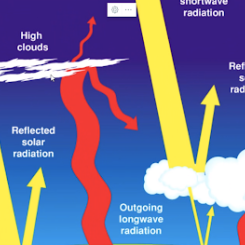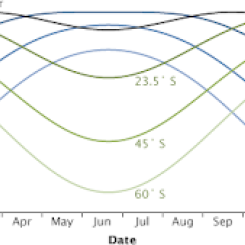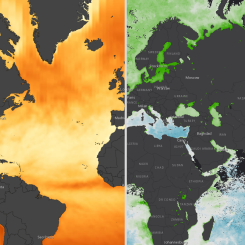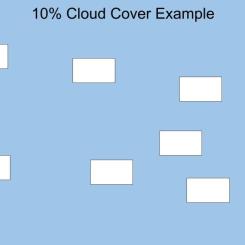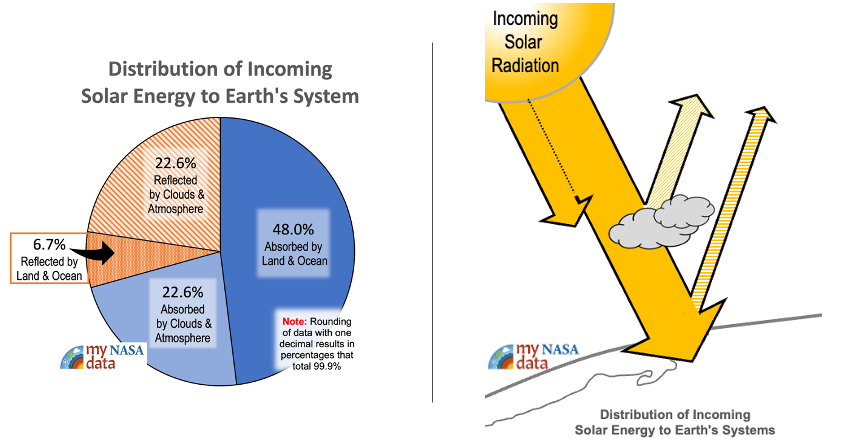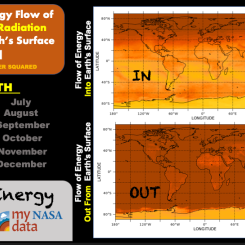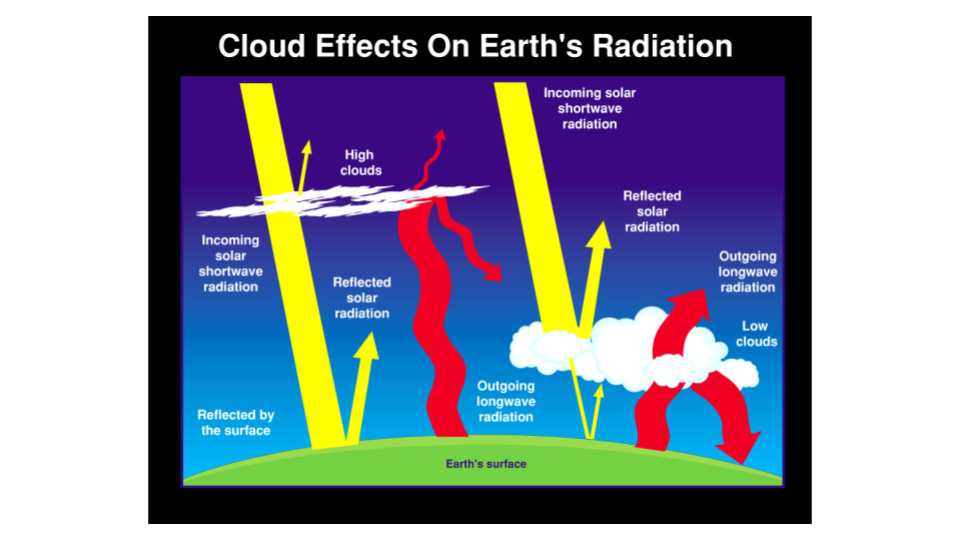Mini Lesson/Activity
Examining a Simplified Model of Cloud Effects on Earth’s Energy Budget
Overview
This lesson is designed to help students analyze the interaction between different cloud heights and Earth's incoming and outgoing energy.
Student Directions
Background
https://mynasadata.larc.nasa.gov/sites/default/files/inline-images/earth%20radiation%20components%20v2.PNG
Earth's energy budget is determined by the balance or difference between incoming energy and outgoing energy or radiation. There are two main types of radiation related to the energy budget, shortwave and longwave radiation.
Shortwave radiation is incoming energy from the Sun. It can be absorbed or reflected. The image shows incoming shortwave radiation as a yellow arrow. It also shows some of that energy being reflected back to space.
There is also energy released, or emitted, from Earth. Think of it as the heat from Earth. This is longwave radiation and is shown by the red arrows. It is not the same as the incoming shortwave radiation.
Analyze
Analyze the image below. The yellow arrows represent incoming shortwave radiation from the Sun. The red arrows represent longwave radiation (heat) emitted by Earth. The thickness of the arrow represents the amount of energy. For example, thicker arrows show more energy. Thinner arrows show less energy. The left side shows the effects of high clouds. The right side shows the effects of low clouds.
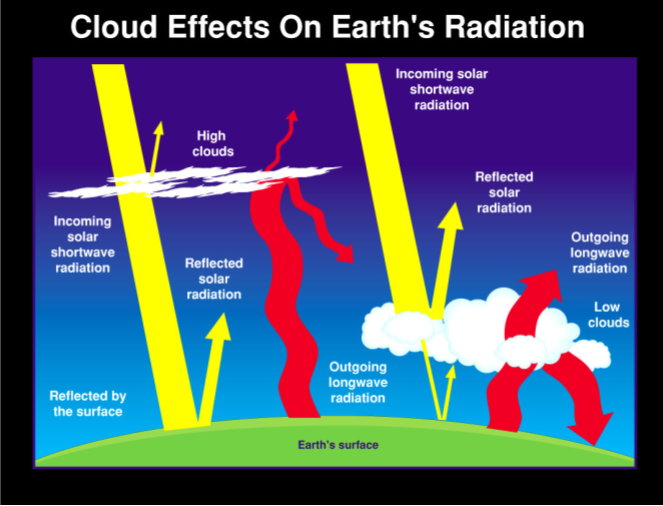
Steps:
- Check with your instructor on how to submit your answers.
- Examine the yellow arrows showing incoming shortwave radiation. What is the difference between the amount of incoming shortwave radiation transmitted through high-level clouds and low-level clouds?
- Examine the red arrows showing outgoing longwave radiation. What is the difference between the amount of outgoing longwave radiation at the top of high-level clouds and low-level clouds?
- Which cloud height allows more incoming solar radiation?
- Which cloud height shows more outgoing longwave radiation?
- Overall, what effect do high-level clouds have on Earth's energy budget?
- Overall, what effect do low-level clouds have on Earth's energy budget?
- As global temperatures rise, how do you think this will affect clouds?
Teacher Note
Teachers, these mini lessons/student activities are perfect "warm up" tasks that can be used as a hook, bell ringer, exit slip, etc. They take less than a class period to complete. Learn more on the "My NASA Data What are Mini Lessons?" page.
Teachers who are interested in receiving the answer key, please complete the Teacher Key Request and Verification Form. We verify that requestors are teachers prior to sending access to the answer keys as we’ve had many students try to pass as teachers to gain access.
Disciplinary Core Ideas:
- PS4B: Electromagnetic Radiation
- ESS2A: Earth Materials and Systems
Crosscutting Concepts:
- Scale, Proportion, and Quantity
- Systems and System Models
Science and Engineering Practices:
- Developing and Using Models
- Analyzing and Interpreting Data

